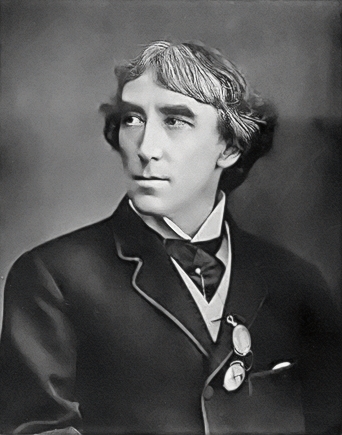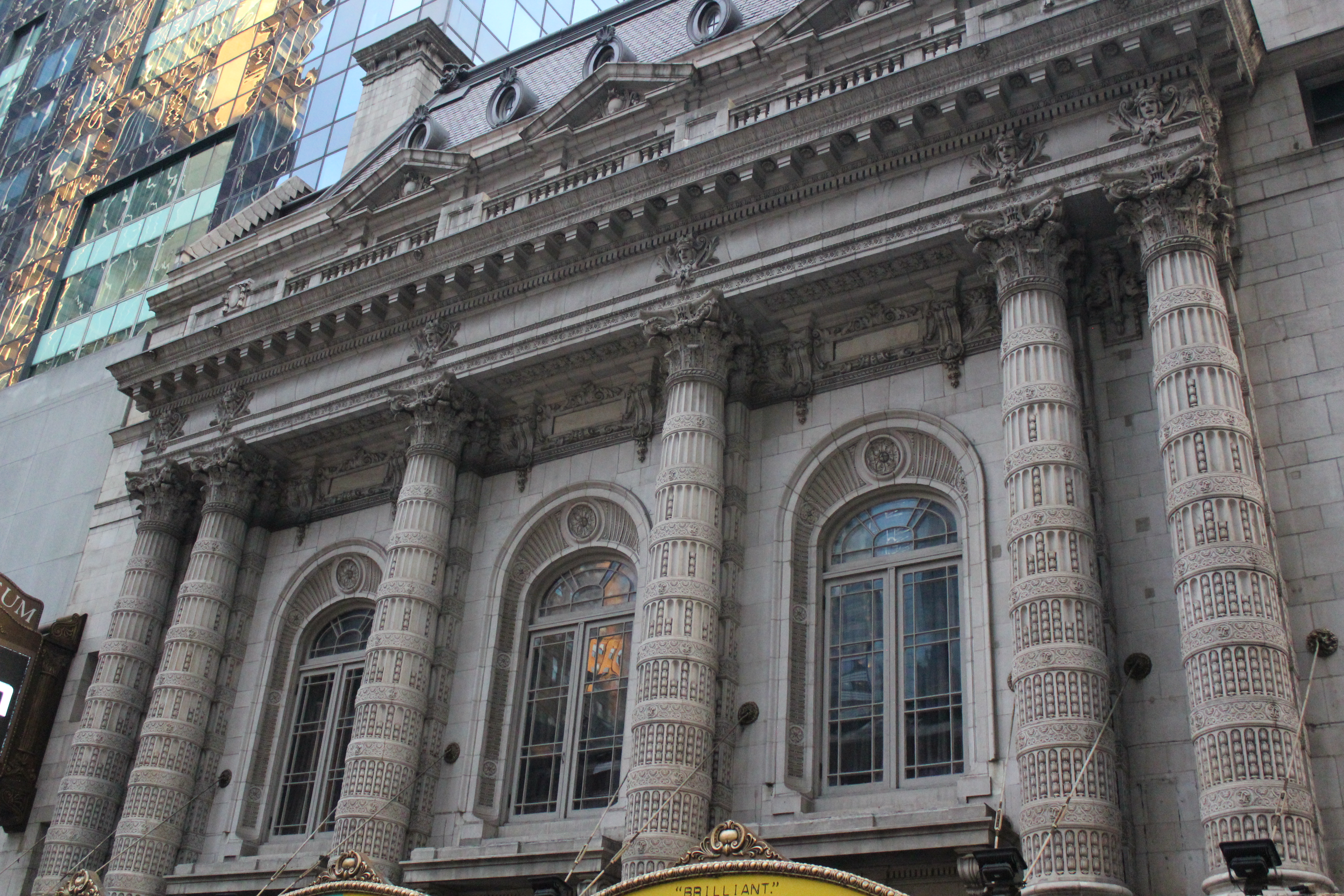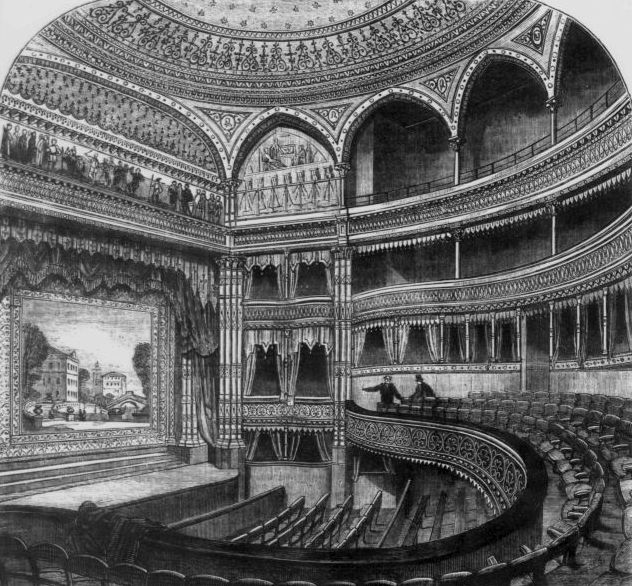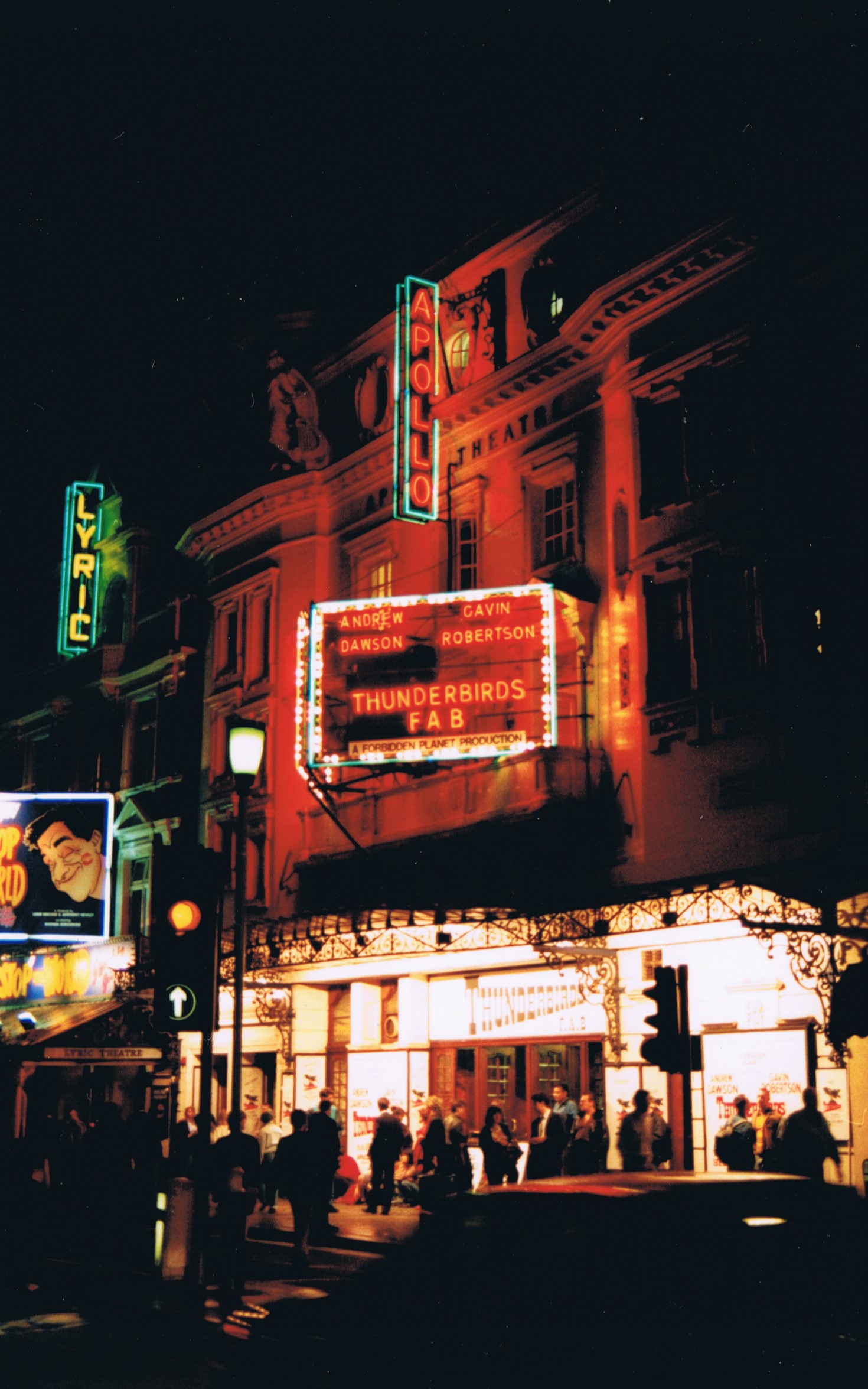|
Nora Swinburne
Leonora Mary Johnson (24 July 1902 – 1 May 2000), known professionally as Nora Swinburne, was an English people, English actress who appeared in many Cinema of the United Kingdom, British films. Early years Swinburne was born in Bath, Somerset, Bath, Somerset, the daughter of Henry Swinburne Johnson and his wife Leonora Tamar (née Brain). She was educated at Rosholme College, Weston-super-Mare, and studied for the stage at the Royal Academy of Dramatic Art. As a member of Clive Currie's Young Players in 1914, she appeared at the Grand, Croydon, Court and Little Theatres, during that year. In 1914, she attended an audition with the ballerina Phyllis Bedells and later Anna Pavlova who considered her too young, even if very talented, for the corps de ballet. Nora instead joined the Italia Conti Academy of Theatre Arts, Italia Conti school where she obtained her first real part as a child actress in ''Where the Rainbow Ends''. She performed in the show in London and in all the ... [...More Info...] [...Related Items...] OR: [Wikipedia] [Google] [Baidu] |
The River (1951 Film)
''The River'' (French: ''Le Fleuve'') is a 1951 American Technicolor drama (film and television), drama romance film directed by Jean Renoir while Indian filmmaker Satyajit Ray held the post of assistant director. It was filmed in India. A fairly faithful dramatization of the 1946 novel of the same name by Rumer Godden, the film narrative follows a teenager's Coming-of-age story, coming of age and first love, with the namesake river as a central theme and backdrop. The film was produced by Kenneth McEldowney, and original music was by M. A. Partha Sarathy. The cast includes Esmond Knight, Nora Swinburne and Arthur Shields. Plot Harriet (Patricia Walters) is a teenaged girl who belongs to an upper middle-class English people, English family residing on the banks of the Ganges River in British Raj, British India. Her father (Esmond Knight) runs a jute mill, and she has four sisters and one brother, all several years younger than her. They are raised in a genteel, English setting ... [...More Info...] [...Related Items...] OR: [Wikipedia] [Google] [Baidu] |
Noël Coward Theatre
The Noël Coward Theatre, formerly known as the Albery Theatre, is a West End theatre in St. Martin's Lane in the City of Westminster, London. It opened on 12 March 1903 as the New Theatre and was built by Sir Charles Wyndham behind Wyndham's Theatre which was completed in 1899. The building was designed by the architect W. G. R. Sprague with an exterior in the classical style and an interior in the Rococo style. In 1973, it was renamed the Albery Theatre in tribute to Sir Bronson Albery who had presided as its manager for many years. Since September 2005, the theatre has been owned by Delfont-Mackintosh Ltd. It underwent major refurbishment in 2006, and was renamed the Noël Coward Theatre when it re-opened on 1 June 2006. The building is a Grade II Listed structure. History Early years, 1903–1919 The New was the second of the three theatres in St Martin's Lane. The Trafalgar Square (now the Duke of York's) opened in 1892 and the London Coliseum in 1904. The actor-manag ... [...More Info...] [...Related Items...] OR: [Wikipedia] [Google] [Baidu] |
Vaudeville Theatre
The Vaudeville Theatre is a West End theatre on the Strand in the City of Westminster. As the name suggests, the theatre held mostly vaudeville shows and musical revues in its early days. It opened in 1870 and was rebuilt twice, although each new building retained elements of the previous structure. The current building opened in 1926, and the capacity is now 690 seats. Rare ''thunder drum'' and ''lightning sheets'', together with other early stage mechanisms, survive in the theatre. History Origins The theatre was designed by prolific architect C. J. Phipps, and decorated in a Romanesque style by George Gordon. It opened on 16 April 1870 with Andrew Halliday's comedy, ''For Love Or Money'' and a burlesque, ''Don Carlos or the Infante in Arms''. A notable innovation was the concealed footlights, which would shut off if the glass in front of them was broken. The owner, William Wybrow Robertson, had run a failing billiard hall on the site but saw more opportunity in theatre. ... [...More Info...] [...Related Items...] OR: [Wikipedia] [Google] [Baidu] |
Haymarket Theatre
The Theatre Royal Haymarket (also known as Haymarket Theatre or the Little Theatre) is a West End theatre on Haymarket in the City of Westminster which dates back to 1720, making it the third-oldest London playhouse still in use. Samuel Foote acquired the lease in 1747, and in 1766 he gained a royal patent to play legitimate drama (meaning spoken drama, as opposed to opera, concerts or plays with music) in the summer months. The original building was a little further north in the same street. It has been at its current location since 1821, when it was redesigned by John Nash. It is a Grade I listed building, with a seating capacity of 888. The freehold of the theatre is owned by the Crown Estate. The Haymarket has been the site of a significant innovation in theatre. In 1873, it was the venue for the first scheduled matinée performance, establishing a custom soon followed in theatres everywhere. Its managers have included Benjamin Nottingham Webster, John Baldwin Buckstone, S ... [...More Info...] [...Related Items...] OR: [Wikipedia] [Google] [Baidu] |
St Martin's Theatre
St Martin's Theatre is a West End theatre which has staged the production of ''The Mousetrap'' since March 1974, making it the longest continuous run of any show in the world. The theatre is located in West Street, near Shaftesbury Avenue, in the West End of London. It was designed by W. G. R. Sprague as one of a pair of theatres, along with the Ambassadors Theatre, also in West Street. Richard Verney, 19th Baron Willoughby de Broke, together with B. A. (Bertie) Meyer, commissioned Sprague to design the theatre buildings. Although the Ambassadors opened in 1913, construction of the St Martin's was delayed by the outbreak of the First World War. The theatre is still owned by the present Lord Willoughby de Broke and his family. The first production at the St Martin's was the spectacular Edwardian musical comedy ''Houp La!'', starring Gertie Millar, which opened on 23 November 1916. The producer was the impresario Charles B. Cochran, who took a 21-year lease on the new theatre.C ... [...More Info...] [...Related Items...] OR: [Wikipedia] [Google] [Baidu] |
Belasco Theatre
The Belasco Theatre is a Broadway theatre, Broadway theater at 111 West 44th Street, between Seventh Avenue (Manhattan), Seventh Avenue and Sixth Avenue, in the Theater District, Manhattan, Theater District of Midtown Manhattan in New York City. Originally known as the Stuyvesant Theatre, it was built in 1907 and designed by architect George Keister for impresario David Belasco. The Belasco Theatre has 1,016 seats across three levels and has been operated by The Shubert Organization since 1948. Both the facade and interior of the theater are List of New York City Landmarks, New York City landmarks. The main facade on 44th Street is made of red brick in Flemish bond, with terracotta decorative elements. The ground floor contains the entrance, while the upper stories are asymmetrical and topped by a pediment. Belasco and his company had their offices in the western wing of the theater. A ten-room duplex penthouse apartment occupies the top of the eastern wing and contained Belas ... [...More Info...] [...Related Items...] OR: [Wikipedia] [Google] [Baidu] |
Lyceum Theatre (Broadway)
The Lyceum Theatre ( ) is a Broadway theater at 149 West 45th Street, between Seventh Avenue and Sixth Avenue, in the Theater District of Midtown Manhattan in New York City. Opened in 1903, the Lyceum Theatre is one of the oldest surviving Broadway venues, as well as the oldest continuously operating legitimate theater in New York City. The theater was designed by Herts & Tallant in the Beaux-Arts style and was built for impresario Daniel Frohman. It has 922 seats across three levels and is operated by The Shubert Organization. The facade became a New York City designated landmark in 1974, and the lobby and auditorium interiors were similarly designated in 1987. The theater maintains most of its original Beaux-Arts design. Its 45th Street facade has an undulating glass-and-metal marquee shielding the entrances, as well as a colonnade with three arched windows. The lobby has a groin-vaulted ceiling, murals above the entrances, and staircases to the auditorium's balcony level ... [...More Info...] [...Related Items...] OR: [Wikipedia] [Google] [Baidu] |
St James's Theatre
The St James's Theatre was in King Street, St James's, London. It opened in 1835 and was demolished in 1957. The theatre was conceived by and built for a popular singer, John Braham; it lost money and after three seasons he retired. A succession of managements over the next forty years also failed to make it a commercial success, and the St James's acquired a reputation as an unlucky theatre. It was not until 1879–1888, under the management of the actors John Hare and Madge and W. H. Kendal that the theatre began to prosper. The Hare-Kendal management was succeeded, after brief and disastrous attempts by other lessees, by that of the actor-manager George Alexander, who was in charge from 1891 until his death in 1918. Under Alexander the house gained a reputation for programming that was adventurous without going too far for the tastes of London society. Among the plays he presented were Oscar Wilde's ''Lady Windermere's Fan'' (1892) and ''The Importance of Being Earn ... [...More Info...] [...Related Items...] OR: [Wikipedia] [Google] [Baidu] |
The Bat (play)
''The Bat'' is a three-act play by Mary Roberts Rinehart and Avery Hopwood that was first produced by Lincoln Wagenhals and Collin Kemper in 1920. The story combines elements of mystery and comedy as Cornelia Van Gorder and guests spend a stormy night at her rented summer home, searching for stolen money they believe is hidden in the house, while they are stalked by a masked criminal known as "the Bat". The Bat's identity is revealed at the end of the final act. The play originated as an adaptation of Rinehart's 1908 mystery novel ''The Circular Staircase''. Rinehart and Hopwood altered the story to prepare it for Broadway, including adding the titular antagonist. The connection to the novel led to a legal dispute over film rights with the Selig Polyscope Company, producers of a 1915 film adaptation of the novel, also titled ''The Circular Staircase''. After previewing under the title ''A Thief in the Night'', the play opened as ''The Bat'' at the Morosco Theatre on Broadway on ... [...More Info...] [...Related Items...] OR: [Wikipedia] [Google] [Baidu] |
Gaiety Theatre, London
The Gaiety Theatre was a West End theatre in London, located on Aldwych at the eastern end of the Strand. The theatre was first established as the Strand Musick Hall in 1864 on the former site of the Lyceum Theatre. In 1868, it became known as the Gaiety Theatre and was, at first, known for music hall and then for musical burlesque, pantomime and operetta performances. From 1868 to the 1890s, it had a major influence on the development of modern musical comedy. Under the management of John Hollingshead until 1886, the theatre had early success with ''Robert the Devil'', by W. S. Gilbert, followed by many other burlesques of operas and literary works. Many of the productions starred Nellie Farren. Hollingshead's last production at the theatre was the burlesque ''Little Jack Sheppard'' (1885–86), produced together with his successor, George Edwardes. Edwardes's first show, ''Dorothy'', became a long-running hit. In the 1880s and 90s, the theatre had further success with a ... [...More Info...] [...Related Items...] OR: [Wikipedia] [Google] [Baidu] |
Apollo Theatre
The Apollo Theatre is a Grade II listed West End theatre, on Shaftesbury Avenue in the City of Westminster, in central London.English Heritage listing accessed 28 April 2007 Designed by the architect Lewin Sharp for owner , it became the fourth legitimate theatre to be constructed on the street when it opened its doors on 21 February 1901, with the American '' [...More Info...] [...Related Items...] OR: [Wikipedia] [Google] [Baidu] |
Novello Theatre
The Novello Theatre is a West End theatre on Aldwych, in the City of Westminster. It was known as the Strand Theatre between 1913 and 2005. History The theatre was built as one of a pair with the Aldwych Theatre on either side of The Waldorf Hilton, London, both being designed by W. G. R. Sprague. The theatre was opened by The Shubert Organization as the Waldorf Theatre on 22 May 1905, and was renamed the Strand Theatre, in 1909. It was again renamed as the Whitney Theatre in 1911, before again becoming the Strand Theatre in 1913. In 2005, the theatre was renamed by its owners (Delfont Mackintosh Theatres) the Novello Theatre in honour of Ivor Novello, who lived in a flat above the theatre from 1913 to 1951. The black comedy ''Arsenic and Old Lace (play), Arsenic and Old Lace'' had a run of 1337 performances here in the 1940s, and ''Sailor Beware! (play), Sailor Beware!'' ran for 1231 performances from 1955. Stephen Sondheim's musical ''A Funny Thing Happened on the Way to ... [...More Info...] [...Related Items...] OR: [Wikipedia] [Google] [Baidu] |





.jpg)
.jpg)

